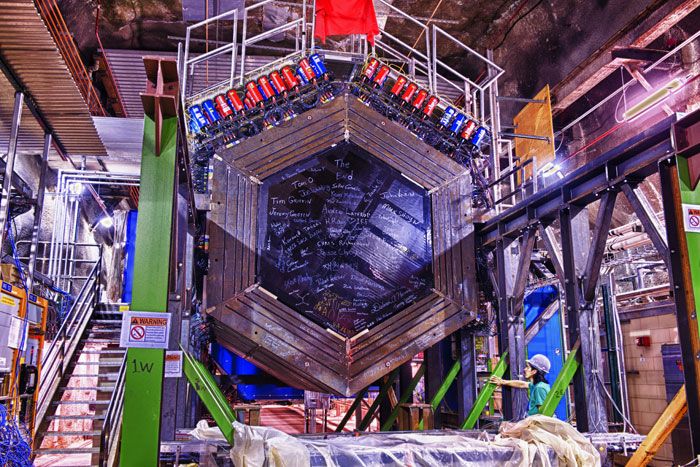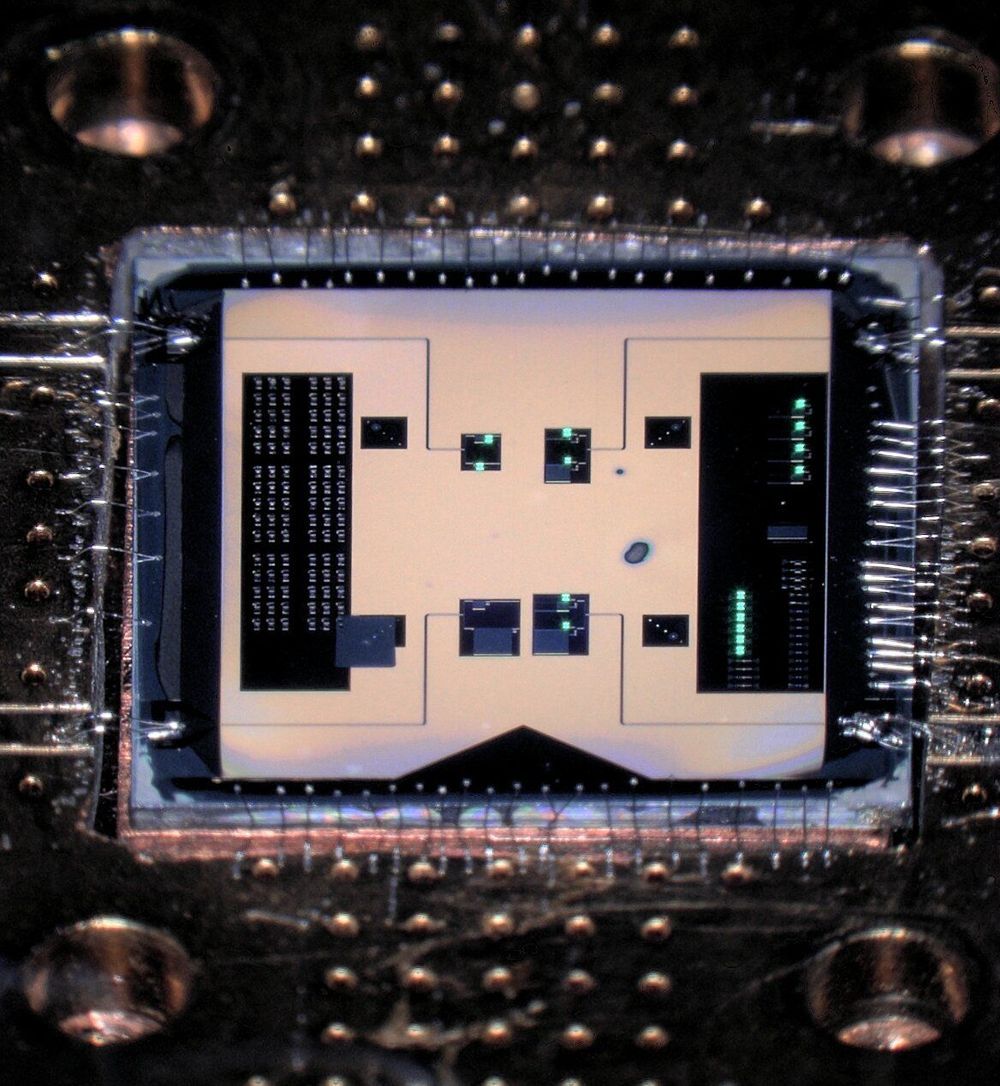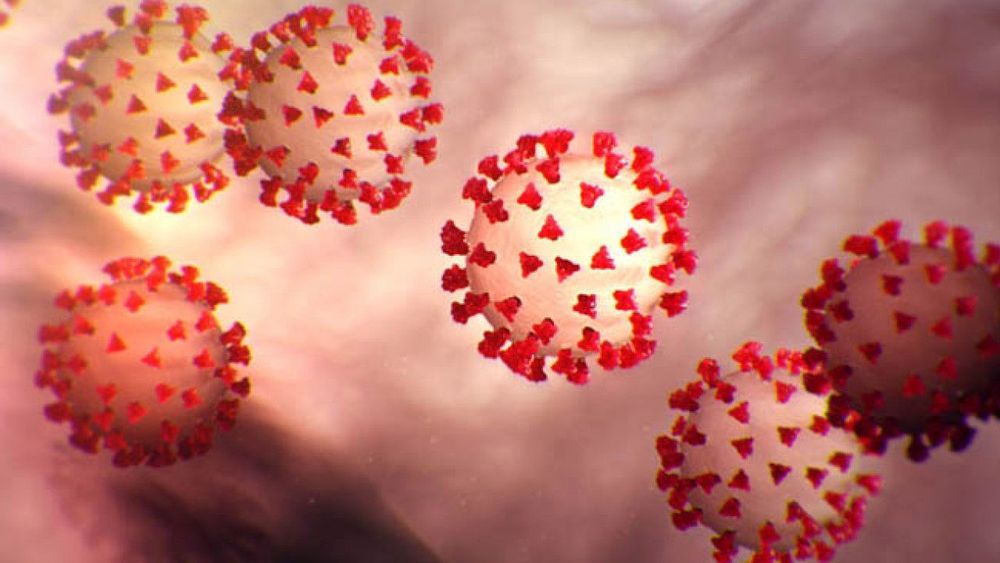Circa 2012
Data transmitted 1 km using elusive particles.


Circa 2019
Researchers at Delft University of Technology have created a quantum circuit to listen to the weakest radio signal allowed by quantum mechanics. This new quantum circuit opens the door to possible future applications in areas such as radio astronomy and medicine (MRI). It also enables experiments to shed light on the interplay between quantum mechanics and gravity. The results have been published in Science.
The usual solution to a weak radio signal is to find a bigger signal, for instance, by picking a different radio station or by moving to the other side of the room. However, m what if we could just listen more carefully?
Weak radio signals are not just a challenge for people trying to find their favourite radio station, but also for magnetic resonance imaging (MRI) scanners at hospitals, as well as for the telescopes scientists use to peer into space. In a quantum leap in radio frequency detection, researchers in the group of Prof. Gary Steele in Delft demonstrated the detection of photons or quanta of energy, the weakest signals allowed by the theory of quantum mechanics.

You may have noticed that the LEAF website is no longer there! Don’t panic, we will explain everything.
We have come a long way
Back in late 2016, we launched the LEAF website as a companion site to Lifespan.io, our research fundraising platform. Since those first steps, the site has become increasingly popular and has enjoyed rapid growth during this time.

We’re proud to announce that will premier at the 2020 Phoenix Film Festival with two theatrical showings this March/April. This will be your only chance to view the film in a theatre! Dates and more information on the premiere to follow shortly. Digital release information to follow shortly thereafter. Thank you all for your patients. We’re so glad to finally be able to share the film and hope to see you all at the premiere!
This will be your only chance to view the film in a theatre! Dates and more information on the premiere to follow shortly. Digital release information to follow shortly thereafter. Thank you all for your patients. We’re so glad to finally be able to share the film and hope to see you all at the premiere!

Chinese official house arrest their people under threat of coronavirus coronavirus-chinese-officials-lock-people-homes-ban-funerals-weddings-zhejiang.
In four cities that are home to more than 30 million people, each household is given a so-called passport. It permits one person to leave every two days.

This is a disorienting time. Disagreements are deep, factions stubborn, the common reality crumbling. Technology is changing who we are and the society we live in at a blinding pace. How can we make sense out of these changes? How can we forge new tools to guide our future? What is our new identity in this changing world?
Social upheavals caused by new technologies have occurred throughout history. When the Spaniards arrived in the New World in 1492, some of their horses esca…
Our world is a system, in which physical and social technologies co-evolve. How can we shape a process we don’t control?

The military-run spaceport at Cape Canaveral will soon be renamed Cape Canaveral Space Force Station to reflect the facility’s transition from the U.S. Air Force to the newly-created Space Force, military officials said Friday.
Officials said Cape Canaveral Air Force Station, home operational launch pads leased by United Launch Alliance and SpaceX, and nearby Patrick Air Force Base south of Cocoa Beach, Florida, will both get new names.
Brig. Gen. Doug Schiess, commander of the 45th Space Wing which oversees Patrick Air Force Base and Cape Canaveral Air Force Station, said Friday that the two installations on the Space Coast will be among the first military facilities in the country receiving new names after the creation of the Space Force in December.

SANTA CLARA COUNTY, Calif. (KRON) — County officials have extended their declaration of a local health emergency in Santa Clara County due to the coronavirus outbreak.
Interactive Map: Track the coronavirus outbreak in real-time
Officials stressed that this does not mean there is an increased risk to the public.

Last week, my colleague Tristan wrote about an AI developer who used machine learning to upscale the famous 1895 train scene to 4K at 60 frames per second. While this was a great short watch, it made me wonder about using AI to restore and enhance old videos.
Thankfully, I stumbled upon a paper featured by the Two Minute Papers YouTube channel over the weekend that aims to improve and colorize these videos. The model uses Temporal Neural Network to identify and correct defects such as flickers in vintage videos.

Several state attorneys general had argued that combining the No. 3 and No. 4 carriers would limit competition and result in higher prices for consumers.
Sprint and T-Mobile say their merger will help them compete against top players AT&T and Verizon, and advance efforts to build a nationwide 5G network. Andrew Harrer / Bloomberg via Getty Images file.